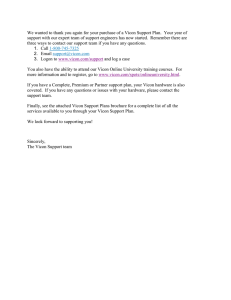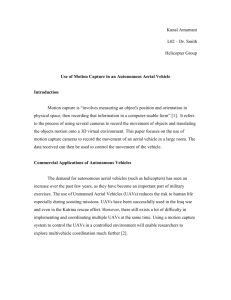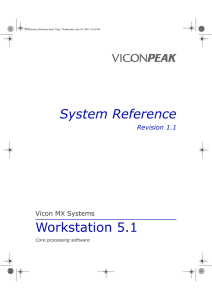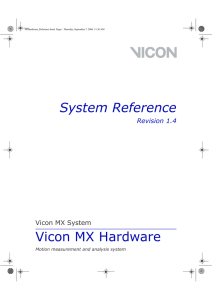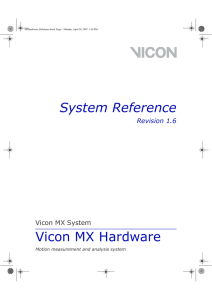1
advertisement
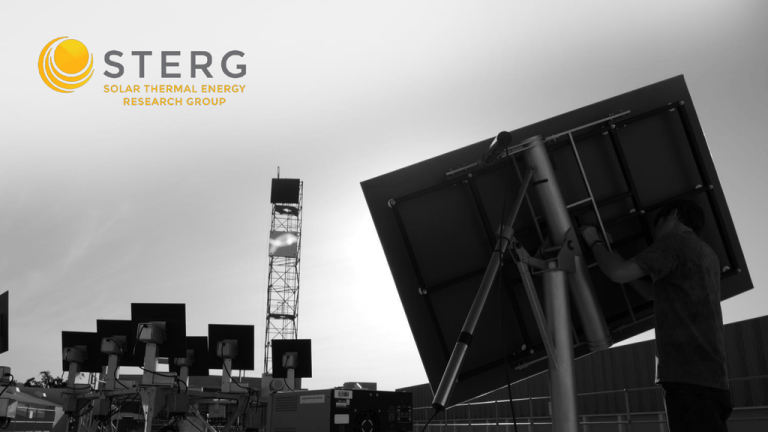
1 Estimating a Drone’s Pose Using Computer Vision Techniques JC Locka, WJ Smita, J Treurnichtb a Solar and Thermal Energy Research Group (STERG), Stellenbosch University b Electronic Systems Laboratory (ESL), Stellenbosch University 2 Background Methodology Results Conclusion Future Work Acknowledgements 3 Drones • Autonomous or manually controlled • Small, light, manoeuvrable, cheap • Various applications – Geomapping, photography, delivery • Possible uses in CSP plant setting 4 Current Procedure • Manually aim heliostat to target below receiver • Downsides – Limited to daytime – Takes very long – Loss of accuracy over time • External loadings compensated for with heavy frames 5 Advantages and Problems of Using Drones • Teams of dedicated drones means more frequent calibration – Lighter, cheaper frames = lower cost of plant • One drone receiver, other source • Drones don’t hold position accurately – Wind, model, GPS errors, etc. • How accurately does is hold its pose? – Required by calibration model 6 Background Methodology Results Conclusion Future Work Acknowledgements 7 Measurement System • Has been done for indoor systems – Uses sophisticated camera system in control loop – Current methods not applicable to outdoor measurement (requires GPS lock) • Use CV-based system – Lasers + Radar unavailable and expensive – CV system uses any camera + OpenCV = very cheap 8 Measurement System (Cont.) • Estimates pose by tracking corners on chessboard • Some errors involved – Need to determine those errors before it can be used 9 Error Measurement • Error determined by comparing with state-of-theart Vicon indoor camera measurement system • First optimise camera matrix’s focal lengths to improve pose estimate – Find fx, fy by minimising error and constant offset bias – Cost Function: 𝑭 𝑓𝑥 , 𝑓𝑦 = 𝑷𝒃 − 𝑷𝒃 − 𝑷𝒄 − 𝑷𝒄 + 𝝐 • Find errors by comparing Vicon with camera data • Check for interdimensional dependence with covariance matrix 10 Background Methodology Results Conclusion Future Work Acknowledgements 11 Camera vs. Vicon: x 12 Camera vs. Vicon: y 13 Camera vs. Vicon: z 14 Camera vs. Vicon: roll 15 Camera vs. Vicon: pitch 16 Camera vs. Vicon: yaw 17 Pose error • Indicates strong interdimensional dependence – Implies that measurement error depends on distance from camera for eg. • Not an optimal result, but still a useful one x y z roll pitch yaw x y z roll pitch yaw 26244.789 -2502.109 1828.222 232.743 -355.309 975.763 -2502.109 33398.392 4938.953 -150.693 -9.425 711.815 1828.222 4938.953 4390.198 -146.195 -16.773 280.497 232.740 -150.693 -146.195 64.747 13.696 2.104 -355.300 9.425 -16.773 13.696 75.867 -30.413 975.760 711.815 280.497 2.104 -30.413 239.816 18 • Camera-based outdoor measurement system designed, tested, optimised • Results compare well with Vicon measurements • Found error covariance matrix that can be used in the future • System ready for tests with a drone 19 • Currently performing tests with real drone – Busy with processing and analysis • Implement measurements into calibration model 20 ACKNOWLEDGEMENTS: CONTACT DETAILS: JC Lock Solar Thermal Energy Research Group (STERG) Stellenbosch University South Africa jclock@sun.ac.za +27 (0)21 808 4016 visit us: concentrating.sun.ac.za 21

